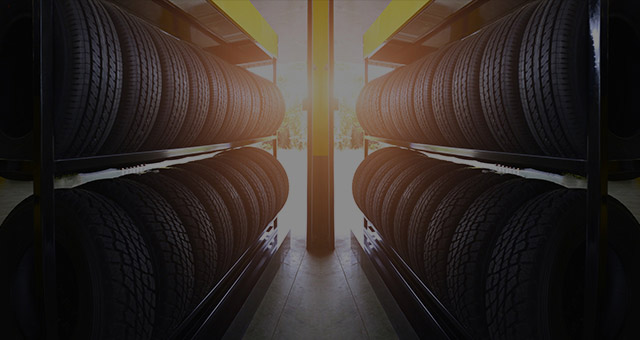Morris Tire and Alignment: Your Trusted Source for Reliable Service
Morris Tire and Alignment: Your Trusted Source for Reliable Service
Blog Article
Tire Service: Understanding Tire Pressure Monitoring Solutions
Understanding Tire Stress Surveillance Solutions (TPMS) is a vital element of preserving optimal lorry efficiency and security on the road. With advancements in auto innovation, TPMS has ended up being a standard attribute in contemporary vehicles, offering real-time details on tire pressure degrees. Digging much deeper into the complexities of TPMS, one can uncover the numerous components that compose this system and the value of each in guaranteeing exact tracking. From straight to indirect TPMS systems, the landscape of tire pressure surveillance varies, each with its unique set of considerations and advantages. Stay tuned to unwind the complexities of TPMS, from upkeep suggestions to the obvious advantages of maintaining your tires appropriately pumped up. tire shop morris.

Significance of TPMS
The significance of Tire Pressure Monitoring Solutions (TPMS) exists in their capacity to enhance automobile safety and security and performance with real-time tracking of tire stress degrees. Keeping the correct tire pressure is critical for making sure optimal handling, braking, and total safety and security of a car. TPMS provides chauffeurs with immediate responses on any kind of underinflated or overinflated tires, permitting prompt changes to be made.
Elements of TPMS
Comprising numerous vital elements, a Tire Stress Monitoring System (TPMS) operates as an advanced safety attribute in contemporary vehicles. The primary components of a TPMS consist of sensors, a control component, and a warning indicator. Sensing units are usually located in the tire shutoff stem or connected to the wheel setting up, where they determine tire pressure and transfer data to the control module. If it finds dramatically low pressure in any of the tires, the control module processes this details and triggers a warning. The caution indication, typically an icon on the dashboard, notifies the vehicle driver to check the affected tire or tires. Some progressed TPMS versions also display the real tire stress analyses for each tire, supplying vehicle drivers with real-time information to make sure optimum tire performance and security. By monitoring tire stress continuously, TPMS assists protect against accidents, minimizes tire wear, and boosts fuel effectiveness, making it an essential part for lorry security and efficiency.
Kinds Of TPMS

On the other hand, indirect TPMS relies on the vehicle's wheel speed sensing units to keep an eye on tire stress. This system finds underinflation by comparing the rotational rates of the wheels. Indirect TPMS is much less expensive than company website straight TPMS, as it utilizes existing sensing units within the lorry.
While direct TPMS supplies much more exact readings, indirect TPMS is easier in layout and generally calls for much less maintenance. Both systems have their benefits and limitations, and the choice between them commonly depends on elements such as price, vehicle make, and personal preference. Recognizing the distinctions between these two kinds of TPMS can assist lorry owners make notified choices regarding tire maintenance and safety.
TPMS Upkeep Tips
Effective maintenance of TPMS is necessary for ensuring ideal efficiency and safety and security of your vehicle. On a regular basis evaluating the TPMS sensors for any type of damages or deterioration is important. Make certain that the sensors are clean and complimentary from debris that might hinder their functioning. In addition, it is advisable to inspect the sensor batteries regularly and replace them as required to guarantee exact readings. Conduct routine examine the tire pressure degrees and contrast them with the TPMS readings to ensure they correspond. Alter the system complying with the maker's standards if there are any inconsistencies. Furthermore, during tire turning or substitute, ensure that the TPMS components are handled meticulously to stop any type of prospective damage. If the TPMS cautioning light illuminates on the control panel, attend to the issue without delay by inspecting the tire pressures and the general system for any type of mistakes. By sticking to these maintenance pointers, moved here you can extend the lifespan of your TPMS and boost the security of your driving experience.
Benefits of Correct Tire Pressure
Keeping appropriate tire pressure, as emphasized in TPMS Upkeep Tips, is critical for reaping the countless advantages related to optimal tire stress levels. Among the main benefits of maintaining the appropriate tire stress is improved fuel efficiency. When tires are properly pumped up, there is much less moving resistance, leading to far better gas economic climate. Additionally, correct tire stress ensures even tire wear, prolonging the life expectancy of the tires and advertising more secure driving problems. With the appropriate tire stress, vehicles also have much better handling and grip, specifically in negative weather. This can boost total driving efficiency and safety and security for the chauffeur and passengers. Additionally, preserving optimal tire pressure can add to a smoother and more comfortable ride by reducing resonances and sound brought on by underinflated tires. In final thought, the benefits of correct tire pressure exceed simply tire long life; they include enhanced fuel efficiency, boosted security, much better automobile performance, and overall driving convenience.
Conclusion
Finally, understanding tire pressure monitoring systems (TPMS) is critical for maintaining optimal tire stress and making sure car safety. By identifying the significance of moved here TPMS, recognizing with its parts, understanding the different kinds available, adhering to proper upkeep ideas, and understanding the advantages of maintaining proper tire stress, chauffeurs can boost their driving experience and prolong the life expectancy of their tires. Correct tire stress is essential to efficient and risk-free lorry operation.

Report this page